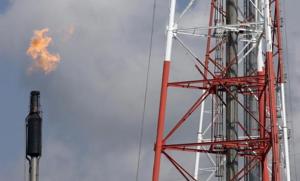Asia oil refiners choose from 300 types of crude
(Reuters) Asia's oil refiners can choose from a sprawling buffet of over 300 crudes from every continent except Antarctica as a combination of cheap freight and rising supplies leaves buyers overwhelmed by the variety of oil grades on offer.
The lifting of the 40-year-old US crude export ban in December 2015 means North American supplies are now competing for Asian buyers along with the barrels sent from the Middle East, Russia and elsewhere. As the Organization of the Petroleum Exporting Countries prepares to meet next week to discuss a potential output freeze, the possibility of US supply eating into their market share lurks in the back of their minds.
A South Korean refiner now has a menu of more than 300 crude grades to choose from, according to Reuters calculations. This includes grades from Ecuador, Mexico and the UK. The greater variety means refiners can optimize their feedstock selections, boosting profitability.
"The volumes that become available in the market change, making it easier to buy, which is something that we are grateful for," said Yasushi Kimura, the president of the Petroleum Association of Japan.
Japanese refiners Cosmo and JX Nippon have bought US crude and condensate respectively, added Kimura who is also chairman of JX Holdings. Condensate is an ultra-light, low-sulfur oil typically produced with natural gas.
Asian refiners are seeking new sources as Middle East condensate supply tightens and as they start to prefer more heavy sour crude, or thicker oil with a high amount of sulfur. The US is well-placed to plug the Asian demand gaps, although sustained opportunities to take advantage of price differences between the regions, known as arbitrage, are still in the making, industry sources said.
US crude and condensate exports to Asia averaged about 26 Mbpd in the first eight months of this year according to data on Thomson Reuters Eikon. That includes crude from Alaska delivered to China in August and to Japan in May.
Plunging shipping costs have also opened up the opportunity for US exports from Gulf of Mexico ports. Most tanker rates in 2016 have dropped to multi-year lows and some have even hit levels not seen since the global financial crisis of 2009, according to data on Thomson Reuters Eikon.
South Korea's GS Caltex purchased 1 MMbbl of Eagle Ford crude for November arrival, a company spokesman said on Friday.
The completion of the Panama Canal expansion will bolster US exports as Suezmax tankers capable of carrying up to 1 MMBbl of oil can now traverse the waterway, improving the economics of the trans-Pacific voyage.
US producers court Asia. Arbitrage opportunities to Asia will become feasible when the difference between ICE Brent and WTI futures widen beyond $3/bbl, a survey of five Asia-based industry sources showed. The spread is currently around $1.45 but recently widened to $3.19.
US producers are actively courting customers in Asia which is home to about 35% of global refining capacity.
"This is the first APPEC we've had since the suspension of the oil export ban in the US. There was a number of people I hadn't seen in 30 years, old timers from Texas and the US Gulf; they're out here looking for buyers," said John Driscoll, director of JTD Energy Services in Singapore, speaking about a large industry gathering earlier this month.
Price reporting agency Argus Media launched two new Asia-delivered price indexes for US crude this month, underscoring expectations that US exporters will target Asia. Argus competes with news and pricing agencies such as S&P Global Platts, OPIS and Thomson Reuters.
US producers aim "to enlarge their footprint in Asia-Pacific, the fastest growing market", said Alejandro Barbajosa, Argus' vice-president of crude. "The expansion of the Panama Canal is expected to significantly improve the arbitrage economics (to Asia)."
Asian refiners are keen on heavy sour Canadian crude oil and US condensate, but less keen on light WTI crude, an official from a South Korean refiner said.
A number of Asian refineries have upgrading units that can extract larger volumes of fuels like gasoline and diesel after processing heavy sour crudes.
North American producers could push heavy sour Western Canadian Select crude to Asia, keeping in mind the region's ability to absorb Iraqi Basrah Heavy crude when it was offered last year.
Asia faces a supply and demand mismatch for condensate of about 200 Mbpd next year as Middle Eastern supply drops while demand rises and that could draw US condensate.
Reporting by Mark Tay; Additional reporting by Henning Gloystein, Osamu Tsukimori, Liz Hampton and Catherine Ngai; Editing by Christian Schmollinger







Comments